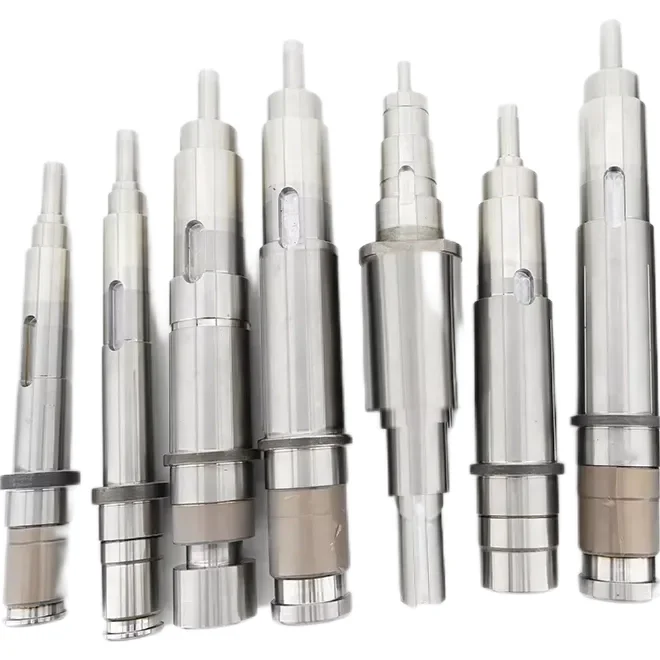- This topic is empty.
-
AuthorPosts
-
26/03/2025 at 17:14 #82055
In the field of advanced manufacturing and mechanical engineering, axis parts machining is one of the key areas that requires high precision. These parts form the backbone of various motion systems, including CNC machine tools, automotive and other applications. In this blog post, as a professional prototype CNC processing service provider, Vibo will share the benefits of high precision axis parts processing service, which is essential for industries that require tight tolerances, excellent durability and perfect performance.
Benefits of High Precision Axis Parts CNC Processing Service
1. Enhanced Accuracy and Performance
High precision axis parts processing services leverage state-of-the-art CNC machining, grinding, and laser cutting technologies to produce components with extremely tight tolerances, often within micrometers. This level of accuracy ensures that:
– Axis parts fit perfectly within the assembly, reducing mechanical play and misalignment.
– Systems function smoothly, minimizing errors in positioning and movement.
– Components maintain consistency across batches, crucial for industries with stringent quality standards such as aerospace and medical device manufacturing.
By ensuring exact geometric dimensions and alignment, precision machining improves the overall performance of machinery, reducing the need for frequent adjustments and maintenance.
2. Superior Material Integrity and Durability
Advanced precision machining processes, such as wire EDM (Electrical Discharge Machining), CNC grinding, and diamond turning, allow for minimal material stress and deformation during processing. This leads to:
– Enhanced structural integrity, ensuring the parts can withstand high loads and repetitive stress.
– Improved wear resistance, reducing the need for replacements and minimizing downtime.
– Preservation of critical surface properties, such as hardness and smoothness, which are essential for applications like high-speed spindles and linear motion systems.
High precision processing also accommodates the use of specialized materials such as titanium, Inconel, and carbon fiber composites, which are commonly used in high-performance applications.
3. Increased Efficiency in Assembly and Integration
Precision-manufactured axis parts simplify the assembly process, as components fit together seamlessly. This results in:
– Reduced assembly time and labor costs due to fewer modifications and reworks.
– Improved modularity, allowing components to be easily replaced or upgraded.
– Minimized risk of assembly-induced defects, leading to higher reliability in end products.
When axis components exhibit near-perfect tolerances, entire systems operate more efficiently, reducing energy consumption and enhancing mechanical efficiency.

4. Customization and Flexibility
High precision axis parts processing services offer manufacturers the ability to produce custom components tailored to specific applications. This is particularly important for:
– Research and development projects requiring unique geometries and material properties.
– Industries such as aerospace, where each component must be optimized for weight, strength, and aerodynamics.
– Prototyping applications, enabling rapid iterations with minimal deviation from design specifications.
By using multi-axis CNC machining centers and advanced CAD/CAM software, manufacturers can produce complex parts with intricate geometries that would be impossible to achieve with conventional machining methods.
5. Cost Reduction Through Improved Reliability and Longevity
While high precision machining services might initially seem more expensive, they ultimately lead to significant cost savings by:
– Reducing the frequency of component failure and maintenance cycles.
– Eliminating waste due to production errors and material inefficiencies.
– Extending the lifespan of machinery by preventing premature wear and tear.
Precision-machined axis components contribute to lower total cost of ownership (TCO) by enhancing durability and ensuring consistent performance over extended operational periods.
6. Compliance with Stringent Industry Standards
Industries such as aerospace, medical device manufacturing, and semiconductor fabrication demand compliance with strict international standards, including ISO 9001, AS9100, and ITAR regulations. High precision axis parts processing services ensure:
– Full traceability of materials and manufacturing processes.
– Compliance with geometric dimensioning and tolerancing (GD&T) standards.
– Documentation of quality assurance measures, including coordinate measuring machine (CMM) inspections and non-destructive testing (NDT).
By adhering to these standards, precision machining providers help manufacturers meet regulatory requirements and ensure product reliability in mission-critical applications.
Conclusion
High precision axis parts processing services provide a multitude of benefits across various industries by ensuring extreme accuracy, durability, and efficiency. The combination of cutting-edge machining techniques, advanced materials, and automation technologies enables manufacturers to achieve superior performance in their machinery and systems. While the initial investment in precision machining may be higher, the long-term benefits—including reduced maintenance costs, enhanced reliability, and compliance with stringent industry standards—make it a vital component of modern engineering and manufacturing.
-
AuthorPosts
- You must be logged in to reply to this topic.


